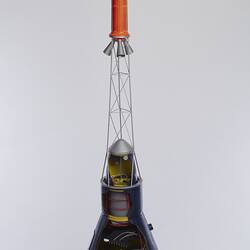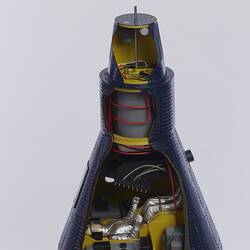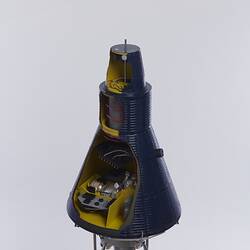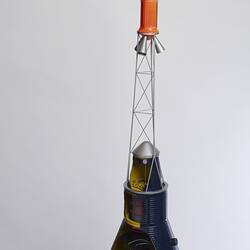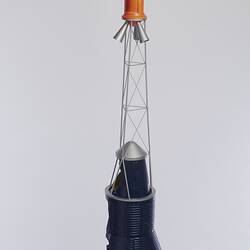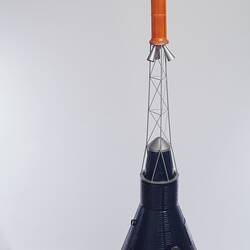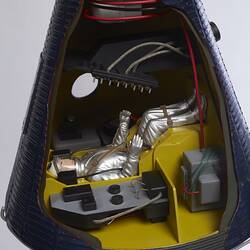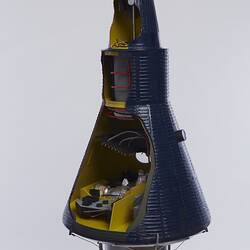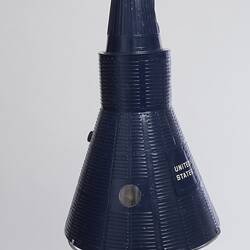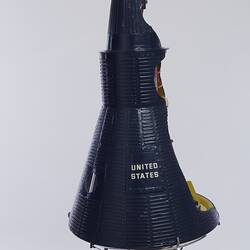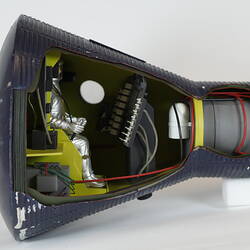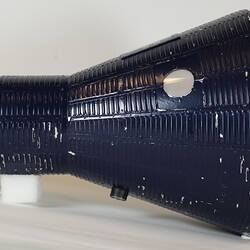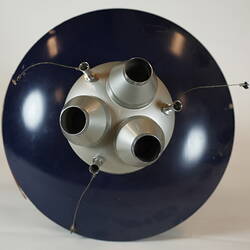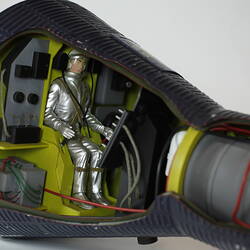Summary
Model of the American NASA 'Freedom 7' spacecraft, made at 1:6 scale.
The 'Freedom 7' became famous for its role in pioneering space flight for American astronauts. On 5 May 1961, the first American flew in space when NASA's Mercury command capsule 'Freedom 7' took NASA astronaut Alan Shepard Jnr into sub-orbital flight for 15 minutes and 28 seconds on the Mercury-Redstone 3 (MR-3) mission.
The 'Freedom 7' was launched from Cape Canaveral in Florida, USA by a Mercury-Redstone rocket, with the public watching the event on television. The capsule hit an altitude of 115 miles and flew for 302 miles.
Russian cosmonaut Yuri Gagarin had become the first human in space just 23 days before, when on 12 April 1961 he had orbited earth for 108 minutes.
Alan Shepard Jnr went on to have a successful career as an astronaut, and in 1971 he commanded NASA's Apollo 14 mission to the moon where he became the fifth person to walk on the lunar surface.
The Mercury project aimed to put humans into orbit around the earth for the first time. The Mercury-Redstone rocket was developed and built at NASA's Marshall Space Flight Centre in Huntsville, Alabama in the USA.
Physical Description
Metal conical unit painted navy with bright green inside with dashboard & controls and man in white spacesuit.
More Information
-
Collecting Areas
-
Manufacturer of Item Modelled
George C. Marshall Space Center, National Aeronautics & Space Administration (NASA), Huntsville, Alabama, United States of America, 1961
The Mercury-Redstone rocket that launched the Mercury command capsule 'Freedom 7' was built and tested at the NASA Marshal Space Flight Centre in Huntsville Alabama, before being launched on 5 May 1961. -
Person Depicted
Mr Alan Shepard Jnr - NASA, 5 May 1961
5 May 1961 is the day the Freedom 7 capsule was launched, as shown in this model. -
Inscriptions
On ouside of capsule: UNITED / STATES
-
Classification
-
Category
-
Discipline
-
Type of item
-
Overall Dimensions
610 mm (Length), 360 mm (Width), 360 mm (Height)
-
Dimensions
136 cm (Length), 32 cm (Outside Diameter)
Measurement From Conservation. Measuring Method: max. dimensions
-
Model Scale
1:6
-
References
[Link 1] accessed 8 March 2022 [Link 2] accessed 8 March 2022 [Link 3] accessed 8 March 2022
-
Keywords
Space Technology, Spacecraft, Space Flight, Spacesuits, Astronauts, Innovation & Design, Models & Modelmaking, DesignWeek2022

